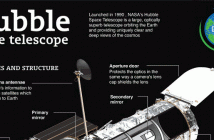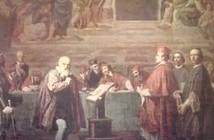Born in December 1571, Johannes Kepler was a sickly child of underprivileged parents. He studied in the University of Tubingen under a scholarship to become a Lutheran minister. While there, Kepler studied the research of Nicolaus Copernicus. The latter taught that the planets revolved around the sun instead of the Earth, despite the fact that he had no observational proof to offer as evidence. What are the Johannes Kepler contributions to astronomy?
Establishment of the Copernican System
In 1596, Johannes Kepler wrote the first public justification of the Copernican system. This was a dangerous standpoint because in 1539, Martin Luther, the Lutheran church founder, criticized the theory when he heard it. The Catholic Church also considered such a stance heretical in 1615.
In the hunt for the most comprehensive notes about the planets’ paths, Kepler contacted Tycho Brahe, a well-off Danish nobleman and astronomer. The latter built a large observatory in Prague wherein he tracked the movements of the planets and kept the most precise studies of the solar system. In 1600, Brahe asked Kepler to work with him as his assistant.
However, Brahe proved to be doubtful and reluctant to share his complete notes with Kepler. Instead, he gave Kepler the job of solving the mystery of Mars, which was among the most perplexing issues in the field of astronomy at the time. As luck would have it, the in depth records of the planet were the things Kepler needed to know how the solar system worked. Brahe’s death in 1601 allowed him to obtain Brahe’s observations before the latter’s family could utilize them for their financial gain.
Kepler believed in the Copernican system. The reason why the orbit of Mars was especially hard was because Copernicus had properly placed the Sun at the core of the Solar System, but had gone wrong in presuming the planets’ orbits to be circles. Therefore, epicycles were still needed in the Copernican theory to clarify the details of planetary movement.
The responsibility of providing the last piece of the puzzle was given to Kepler. After a long struggle, he finally realized that the planets’ orbits weren’t circles, but instead what geometers call ellipsis or flattened circles. The problems with the Martian orbit came specifically from the fact that the red planet’s orbit was the most elliptical of all planets for which Brahe held extensive data. Hence, Brahe had unintentionally provided the very part of his records that would let Kepler eventually create the right theory of the Solar System and thus, cast out Brahe’s own theory.
Three Laws of the Planetary Motion
Kepler acquired Brahe’s data after he died even with the efforts of the latter’s family to keep the information from him. There’s some proof that Kepler got the information by less than lawful means. His discovery and success, however, contributed greatly to the development of modern astronomy. Using the voluminous and accurate information of Brahe, he was finally able to understand that the planets’ orbits were ellipses to create his Three Laws of Planetary Motion.



